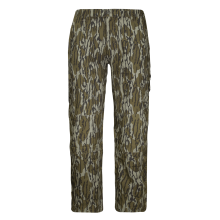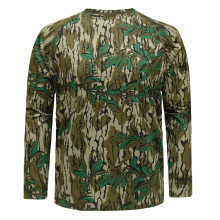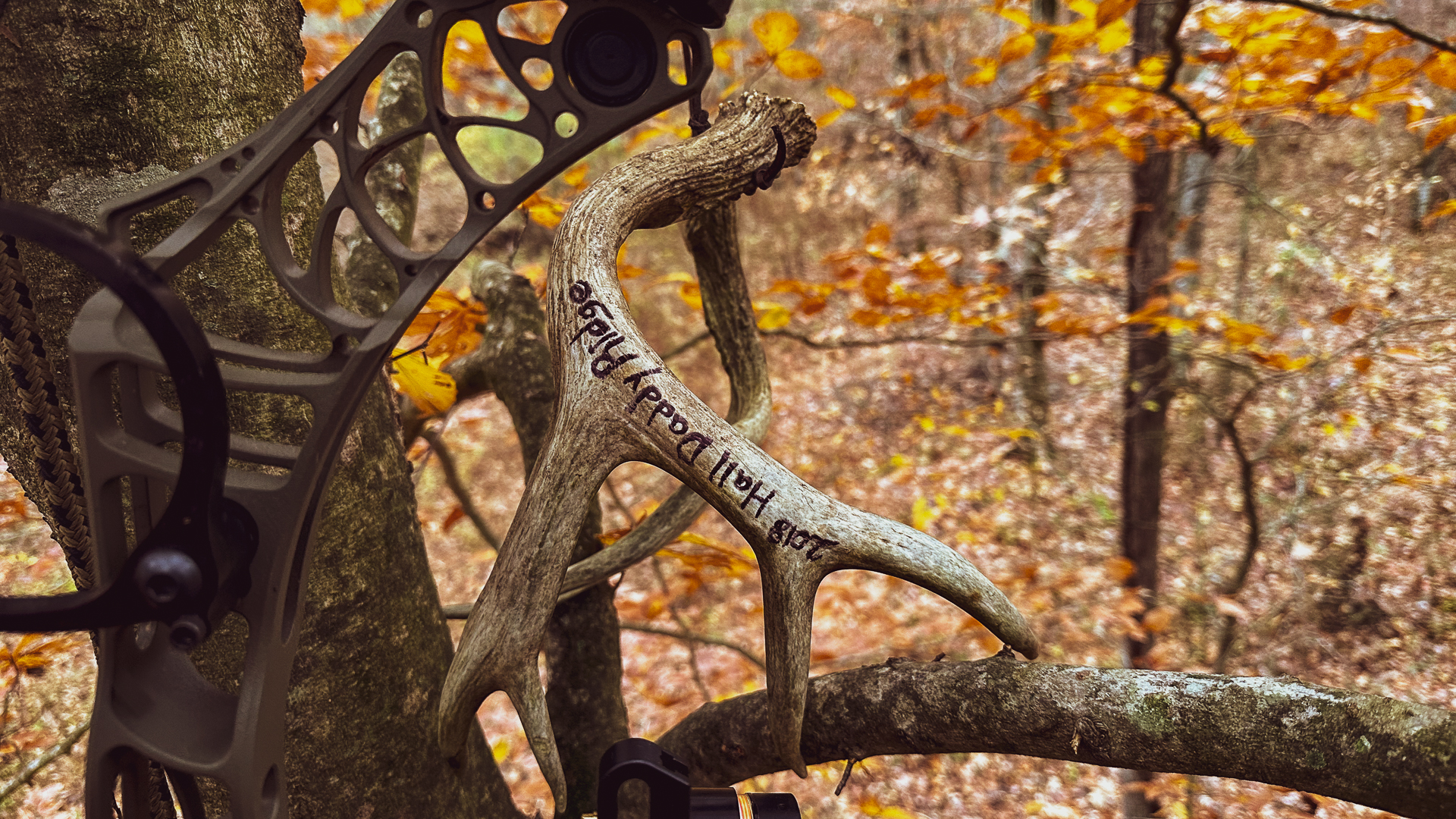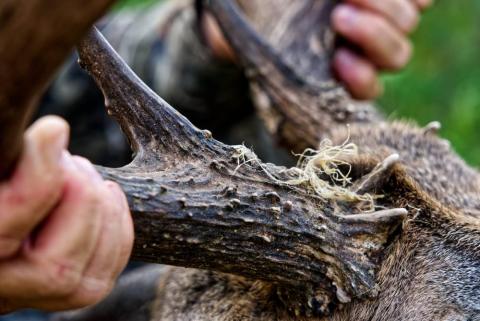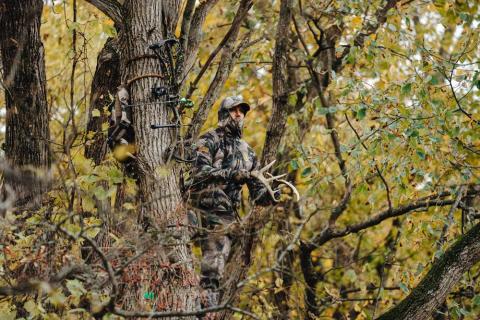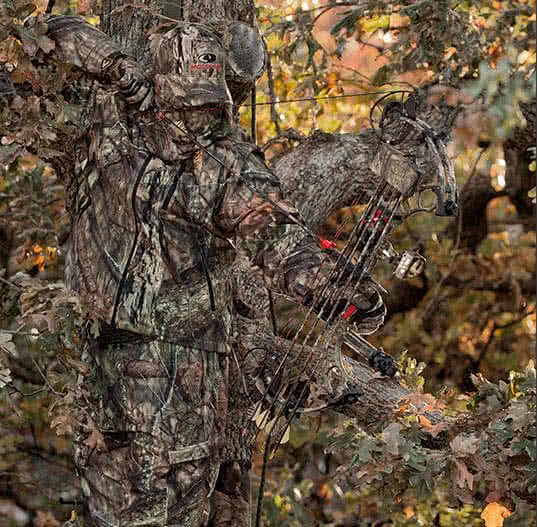Brodie Swisher
The landscape of turkey hunting has changed drastically over the last three or four decades. From turkey population numbers to the gear we use and everything in between, turkey hunting has endured considerable change throughout the years.
Thanks to the conservation efforts of groups like the National Wild Turkey Federation (NWTF), as well as turkey hunters with a long-term vision for better days ahead, there’s a remarkable story of the wild turkey not only surviving but thriving across the country.
But how did we get here?
Let’s take a look back at the evolution of turkey hunting across the country, as well as the people and products that pioneered the way.
Turkey Numbers Then and Now

Fifty years ago, turkey populations were a mere shadow of what they are today. Overhunting in the early 1900s led to an alarming decline in wild turkey numbers. Turkey sightings were slim to none across much of the landscape. In fact, discovering a wild turkey track in the mud was enough to cause hunters to call all their buddies and boast.
In those days, portions of Alabama, as well as the hardwood river bottoms along the mighty Mississippi river, were home to the largest turkey populations. These established regions would soon become the means by which restocking efforts would flourish as concerned conservationists rallied to relocate turkeys from these high-density regions to provide birds to struggling areas across the south, as well as around the country.
The vision was admirable. It simply needed greater support and funding to accomplish the successful revival of wild turkey populations across the country. That support would soon come with the birth of the National Wild Turkey Federation.
The Role of the NWTF in Turkey Conservation
Founded in 1973, the National Wild Turkey Federation (NWTF) would soon play a critical role in restoring turkey populations across North America. The organization worked with state wildlife agencies to trap turkeys in established areas and relocate them to suitable but underpopulated regions. This strategic reintroduction allowed turkeys to thrive in areas where they had previously been eliminated. The NWTF's conservation efforts not only improved turkey populations but also expanded hunting opportunities for sportsmen and women nationwide.
Through trap-and-transfer programs, habitat improvements, and strict conservation practices, turkey populations experienced a remarkable rebound. Today, huntable turkey populations can be found in 49 states across the country. A testimony to the impact of the NWTF and the conservation-minded turkey hunters that helped pave the way throughout the mid-1900s.
Turkey Hunting Industry Boom
With the growth of turkey populations and hunting opportunities across the country, came a boom in the turkey hunting business as visionaries and entrepreneurs saw a demand for gear built specifically for the turkey hunter.
The most visible market – turkey calls.
Turkey Calls

Hunters were fascinated by the concept of calling a wild turkey into range of the gun and brands like Primos, Knight & Hale, Quaker Boy, Lohman, Ben Lee and others came roaring on the scene to meet the demand of turkey hunters in search of calls.
For the first time, mass production of mouth calls, box calls and pot calls could be readily available and reasonably priced at most any sporting goods store and even at the local Walmart.
While some original turkey call brands have faded away, others have adapted and thrived. Primos, Knight & Hale, Quaker Boy, and Hunter Specialties have been joined by newer brands that are carving out their place in the game call world. Woodhaven Custom Calls is arguably the powerhouse these days in the turkey call world, both in the woods and on the competition stage. Rolling Thunder, Zink Calls and Houndstooth are newer brands that have an impressive modern day following among turkey hunters.
And while mouth yelpers remain standard equipment in the turkey vest, these days custom box calls, pot calls, and trumpet yelpers are favorites among turkey hunters simply for their nostalgic value.
Hunting Videos
The turkey hunting business boomed yet again as these game call companies began to haul video equipment to the woods to capture the success accomplished with the use of their calls. It would be the single greatest marketing move a brand could make. The videos spoke for themselves. Hunters couldn’t get enough of the calls or the hunting videos available on VHS tape.
Video content created throughout the 1980s would quickly become legendary. The Primos Truth Turkey series and Knight & Hale’s Ultimate Spring series would be mainstays found on most any reputable sporting goods store shelf.
Later, the Hunter Specialties crew would launch an impressive video production crew with some of the greatest game callers in the country assembled to produce the Cutt’n & Strutt’n video series each spring.
Changing technology brought the end of VHS tapes as DVDs became the standard format for watching hunting videos. However, DVDs would soon become nearly obsolete as streaming platforms like the Mossy Oak GO app have become the modern-day means of video consumption. And hunting videos on YouTube continue to grab the attention of the masses these days with content that’s raw and real.
Camo

Not far behind the turkey calling boom in the mid-80s was the explosion of the hunting camo industry. Industry leaders, Mossy Oak and Realtree, both launched in 1986 and have remained at the top of the food chain in camo and concealment ever since. There have been a number of other brands to come and go, but the OGs of the camo world have remained.
Ironically, Mossy Oak’s Original Bottomland pattern has once again become the hottest camo pattern you’ll find anywhere in the world – nearly 40 years after it first launched.
Vintage Mossy Oak camo has become the badge by which many avid turkey hunters identify themselves these days. Demand from Mossy Oak’s loyal followers have resulted in the return of Mossy Oak classic patterns like Treestand, Greenleaf and Full Foliage.
It’s a nod to the fact that the more things change, the more they stay the same.
Modern Turkey Decoys
Standard decoys have undergone a massive transformation in design and realism. Thirty years ago, simple, soft foam decoys were the standard. These decoys were often minimalistic in appearance, relying more on positioning than realism to lure gobblers.
Today, turkey decoys are incredibly lifelike, featuring detailed feather patterns, true-to-life poses, and even motion capabilities. Full-strut gobbler decoys, jake decoys, and feeding hen designs have revolutionized decoy tactics. Hunters now strategically position decoys to simulate breeding scenarios or feeding flocks to entice wary toms into range.
Guns & Ammo
Shotgun advancements have also played a major role in turkey hunting success. Modern turkey shotguns feature specialized choke tubes, optic sights, and extended-range TSS turkey loads that deliver incredible pattern density and knockdown power. These advancements have allowed hunters to take clean, ethical shots at greater distances than ever before.
TSS loads have led to the majority of turkey hunters hauling a 20 gauge, or even .410, to the turkey woods these days while, achieving performance well beyond what standard 12-gauge loads allowed 30 years ago. TSS turkey loads have truly changed the game when it comes to the guns and ammo the modern-day turkey hunter totes to the woods.
Looking to the Future

As turkey hunting continues to evolve, the balance between effective tactics and ethical practices will remain key. Hunters must stay informed on changing regulations, emerging strategies, and conservation efforts to ensure turkey populations remain healthy for future generations.
The past 50 years have brought remarkable changes to the world of turkey hunting. From rebounding bird numbers to innovative gear and calling techniques, hunters today have more tools and opportunities than ever before.
However, being keenly aware of our past, we can look forward to what lies ahead, wisely focusing on a positive future for the wild turkey and turkey hunting.
Be sure to check out the Mossy Oak film, The Colonel and the Fox, for an inspiring look at wild turkey conservation, then and now.
Read More: The Evolution of Turkey Calls













